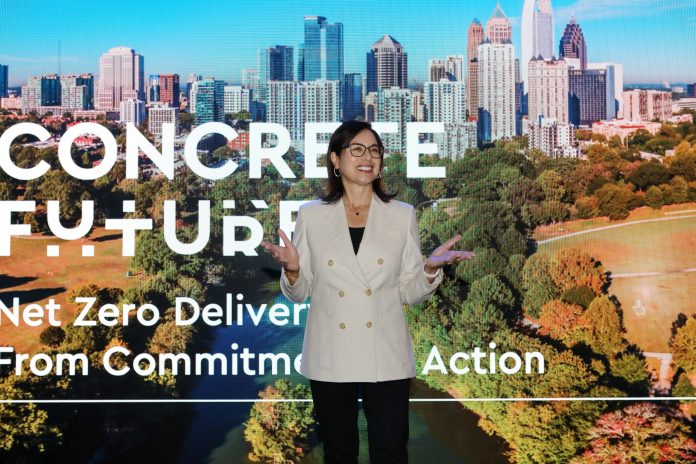Cement and concrete leaders at the Global Cement and Concrete Association’s (GCCA) worldwide ‘CEO Gathering’ call for deeper collaboration with governments on net zero targets
The two-day event in Atlanta, USA, titled ‘Concrete Future: Net Zero Delivery – From Commitment to Action’, brought together CEOs of leading cement and concrete companies, as well as policymakers and built environment leaders to discuss how to address roadblocks, find shared solutions and collaborate with wider societal stakeholders to progress the implementation of the Roadmap to Net Zero.
A survey conducted prior to the gathering found that decarbonisation ranked as the highest priority area among cement and concrete leaders.
Increase investment for Carbon Capture Utilisation and Storage
Together they explored how the industry can work more effectively with governments and to increase investment for the deployment of Carbon Capture Utilisation and Storage (CCUS), as well as discussing the future role of the built environment in delivering a more sustainable and resilient world.
‘Cement and concrete will play a vital role in delivering a net zero world’
Thomas Guillot, GCCA Chief Executive, said: “To achieve net zero and enable the delivery of the sustainable built environment of the future, there needs to be ongoing engagement and deeper collaboration between our industry and government in the years ahead. Targeted government policy will be vital to removing barriers and to expediting our industry’s decarbonisation plans.”
“Cement and concrete will play a vital role in delivering a net zero world. In 2021 our industry made a breakthrough in pledging to reach net zero by 2050. This year in March, we launched the first of a series of Net Zero Accelerator initiatives to help national cement and concrete industries ensure net zero targets are met.”
Notable speakers at the net zero gathering included: Selwin Hart, UN special advisor on Climate; Brad Crabtree, assistant secretary for Fossil Energy and Carbon Management in the U.S. Department of Energy; Diane Hoskins, co-CEO of Gensler – the world’s largest architecture firm; Bjorn Otto, chair of Oil and Gas Climate Initiative (OGCI)’s executive committee; and Dr Gernot Wagner, climate economist and author.
‘Concrete and cement are some of the most carbon-intensive materials’
Selwin Hart, United Nations sssistant secretary-general for Climate Action, said: “We need you to be champions of net-zero credibility by bringing your entire industry and supply chains on board with clear, specific plans on how you will all reach net-zero, and what immediate steps you’ll take to cut emissions significantly during this critical decade.
“Concrete and cement are some of the most carbon-intensive materials in our built environment. So today – on behalf of the Secretary-General – I am calling on you to switch from fossil fuels starting with existing coal, and doing so as soon as possible. I also ask you to invest in the necessary technologies and upgrades to get to net zero, including investing in the ingredients and mixes that could help emit less carbon.
“Your industry has the power to change the course of human history for the better, and it starts with a smart and speedy exit from coal and shift to renewables.”
Brad Crabtree, assistant secretary for Fossil Energy and Carbon Management in the U.S. Department of Energy, said: “The cement and concrete industry has a crucial role to play in an industrial transformation which is essential to achieving our net-zero goals.
“They are leading efforts to further expand and accelerate emission reductions, both globally and at the national level. But industry can’t do it alone. Government has a critical role to play, and we welcome the opportunity to partner with the cement and concrete industry to reduce emissions and decarbonize a critical economic sector.”
Diane Hoskins, co-CEO of Gensler – the world’s largest architecture firm, said: “We are now facing global climate challenges in the built environment, from the raw materials supply chain crisis to the challenge of carbon elimination; from construction procedures to the lack of green technology investments in developing countries.
“It is critical and urgent that we come together across the full built environment value chain. From the building material we will use, to the efficient design and construction practices, and to the circular economy principles we can adopt – such as reuse and recycle – this full scale collaboration will ensure that, together, we can build the sustainable world of tomorrow.”

















